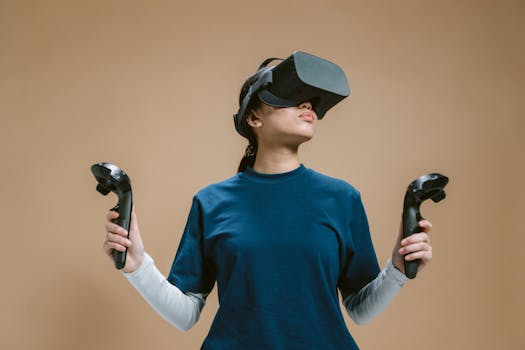Virtual reality field trips expanding young minds
Virtual reality (VR) technology has been making waves in industries like gaming and healthcare, but its potential for education is also gaining attention. With virtual reality field trips, students can embark on immersive learning experiences that expand their minds beyond the confines of the traditional classroom. This innovative approach to education is changing the way students learn and understand the world around them. Let’s take a closer look at how virtual reality field trips are expanding young minds and revolutionizing education.
The Power of Virtual Reality Field Trips
In a world where technology is becoming increasingly prevalent, it’s no surprise that educators are incorporating it into their teaching methods. Virtual reality field trips leverage this technology to create an interactive and engaging learning experience for students. By using VR headsets, students can be transported to virtually any location, exploring the depths of the ocean, walking through ancient ruins, or even traveling through space. This level of immersion creates a sense of presence and makes the learning experience more meaningful for students.
Engaging All Senses for Deeper Learning
One of the biggest advantages of virtual reality field trips is their ability to engage all of the senses. Traditional classroom learning often relies heavily on visual and auditory methods, but virtual reality adds a whole new dimension to learning. Students can physically interact with the virtual environment, stimulating their sense of touch, and even smell and taste can be incorporated for a more comprehensive experience. This multisensory approach helps students retain information better and makes learning more enjoyable.
Breaking Barriers and Expanding Horizons
Another significant advantage of virtual reality field trips is their ability to break physical and geographical barriers. Students who are unable to travel due to financial, logistical, or other constraints can still experience the world in a whole new way. In addition, VR field trips allow students to visit places that may not be accessible or safe in real life, opening up endless possibilities for learning. Students can travel through time, explore different cultures, and experience historical events in a way that was previously impossible.
Catering to Different Learning Styles
Traditional classroom learning may not appeal to all students, as each individual has their own unique learning style. Virtual reality field trips allow students to learn at their own pace and in a way that caters to their learning style. Visual learners can explore and observe, while kinesthetic learners can interact with the virtual environment. This versatility makes VR field trips more inclusive and effective in engaging students with varying learning styles.
The Impact on Education
The integration of virtual reality in education has been met with excitement and enthusiasm from educators. This technology has the potential to revolutionize the way students learn and retain information. By providing an immersive learning experience, students are more likely to stay engaged and interested, leading to better long-term memory retention. Additionally, virtual reality field trips can also enhance critical thinking skills, as students are encouraged to explore and draw their own conclusions about what they see and experience.
Limitations and Challenges
While virtual reality field trips offer numerous benefits, there are also some limitations and challenges that need to be addressed. The cost of VR headsets and equipment can be a barrier for some schools and students. In addition, there is still a lack of research on the long-term effects of virtual reality on young minds, and it’s essential for educators to understand the potential risks and address them accordingly. Despite these challenges, the benefits of virtual reality field trips far outweigh the drawbacks, and as technology advances, these limitations are likely to become less of an issue.
The Future of Education
The potential of virtual reality field trips in the education sector is vast and ever-growing. As the technology continues to advance, we can expect to see more immersive and interactive learning experiences. VR field trips can be tailored to any subject or age group, making them a versatile tool for educators. In the future, it’s possible that virtual reality will become an essential part of the curriculum, providing students with a more comprehensive and engaging education.
Conclusion
Virtual reality field trips have the power to transform how students learn and understand the world. By leveraging the latest technology, educators can create immersive and interactive learning experiences that engage students of all ages and learning styles. While there are still some challenges to overcome, the potential of virtual reality in education is undoubtedly exciting. With the integration of VR field trips, students can embark on educational adventures without ever leaving the classroom, expanding young minds and leading to a more comprehensive and enjoyable learning experience.








